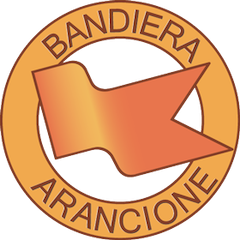MANCIANO
Manciano
Capital of a very large municipality, Manciano called “the spy of the Maremma” opens its doors to this part of Tuscany, just beyond the tuff cities. The nickname of “spy” comes precisely from its position which places it high at the entrance to the Maremma in an enviable position to enjoy the views of this land. The municipality counts among its numerous hamlets two villages famous throughout Italy, Saturnia (with its thermal baths) and Montemrano, but also the town itself deserves to be visited, we are about 50 kilometers from the west shore of Lake Bolsena.
Manciano has been inhabited since prehistoric times, as evidenced by the numerous finds dating back to the Bronze Age, found in the hills between the capital and Saturnia. The first certain news of the castle of Manciano dates back to 1188. It was a possession of the Aldobrandeschi from the 12th century and was then conquered during the 14th century first by the Municipality of Orvieto, then by the Baschi family of Montemerano and finally inherited by marriage to the Orsini family of Pitigliano.
The Rocca is located at the highest point of the town. It is assumed that the credit for its construction is to be attributed to the Aldobrandeschi around the 12th century, renovated first in 1424 by the Sienese and later in 1772 under the Grand Duchy of Tuscany. Next to the Rocca, in an underlying position, we find Piazza Garibaldi which was built by demolishing a part of the walls; in the center of the square in 1913 the monumental fountain was built. The ancient walls of Manciano that surrounded the castle, over time were incorporated into the town, but are still recognizable in some points today. Of the five towers today there are two in via Trento (along the ramp that opens from via Marsala) and one, in part, on the left of Porta Fiorella. Inside the ancient village made up of small alleys and up and down alleys, the church of San Leonardo stands out, built in medieval times with a fourteenth-century baptismal font inside on which the stumps of S. Leonardo can be distinguished. Another symbolic building is the clock tower, built in 1472. In the highest part of the village, a few meters before reaching the fortress, the Nardelli Palace overlooks via Corsini and houses the museum of Prehistory and Protohistory of the Fiora Valley.
Among the most important events that fill the annual calendar of Manciano there is certainly the Palio delle Botti, a race where real wooden barrels are conducted that puts the different districts of the town in competition. This Palio takes place on the last weekend of August. A little earlier, in early summer (usually June), the Manciano Street Music Festival takes place, a festival that sees dozens of street bands from all over the world arrive in the town. Another important event with a long history behind it is the Cantine Festival which takes place in mid-September.


